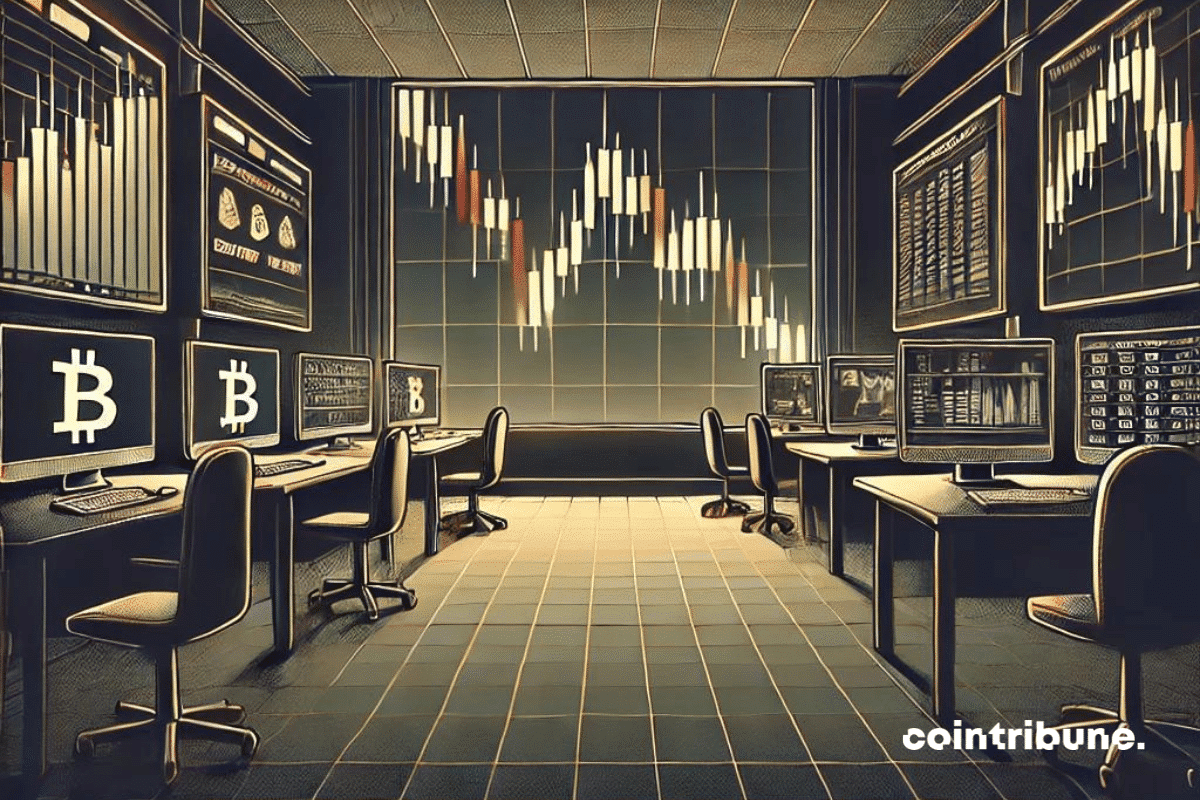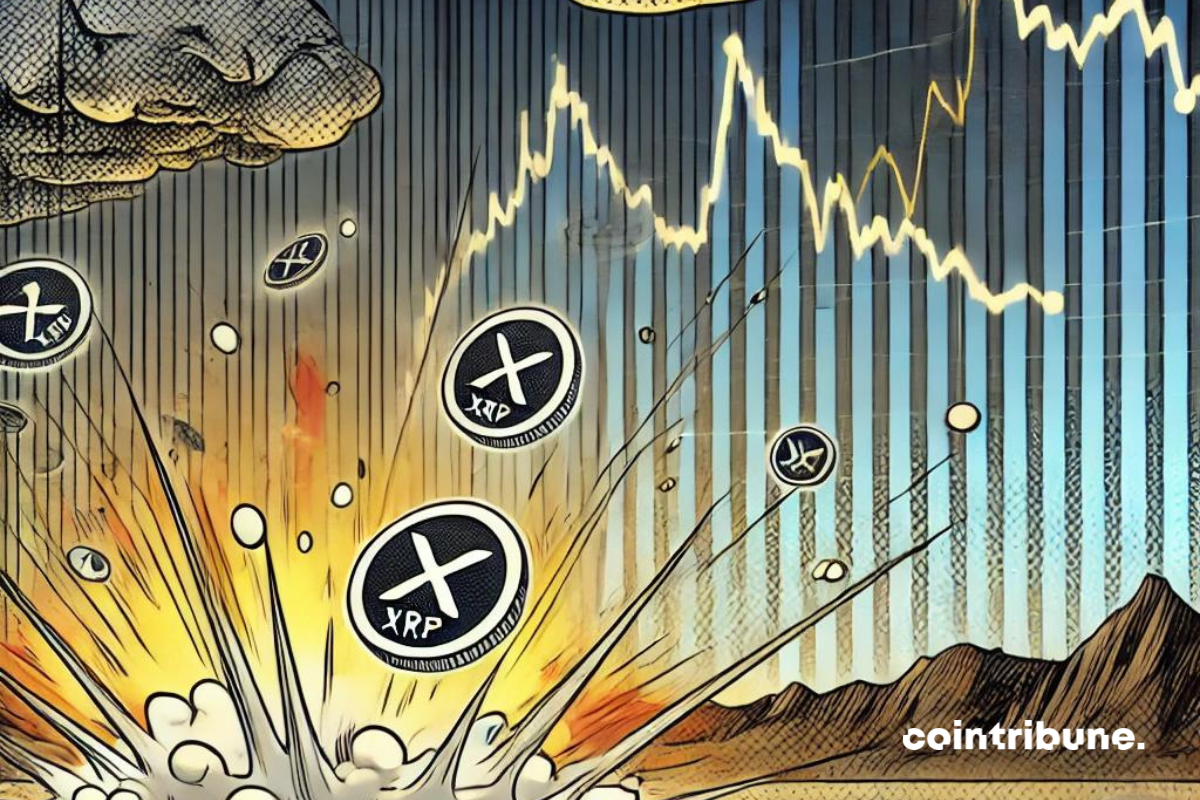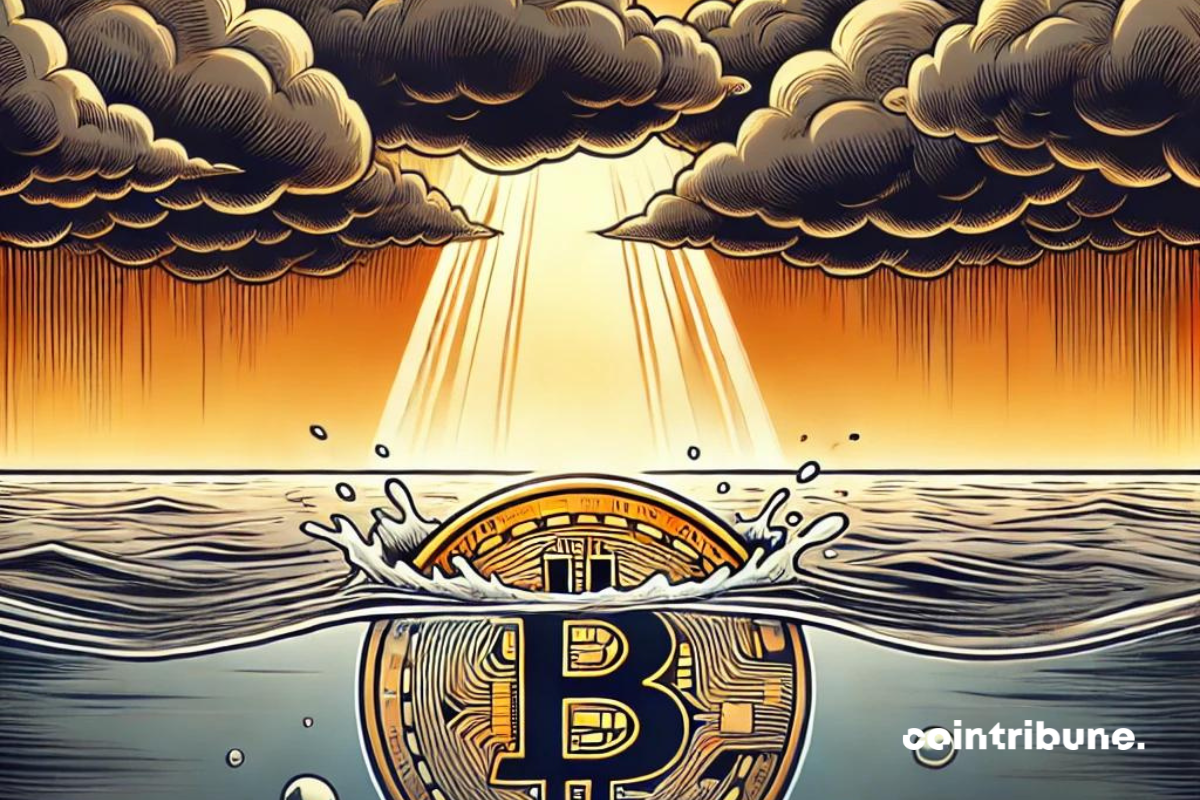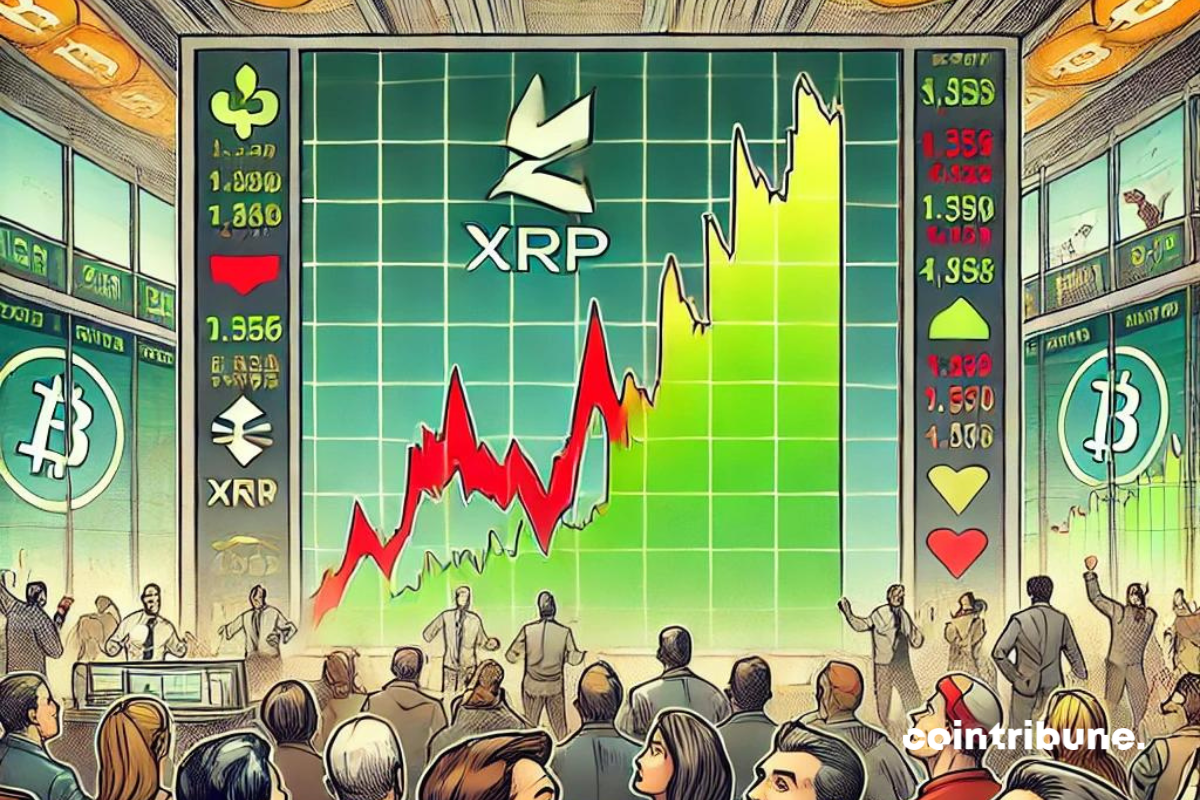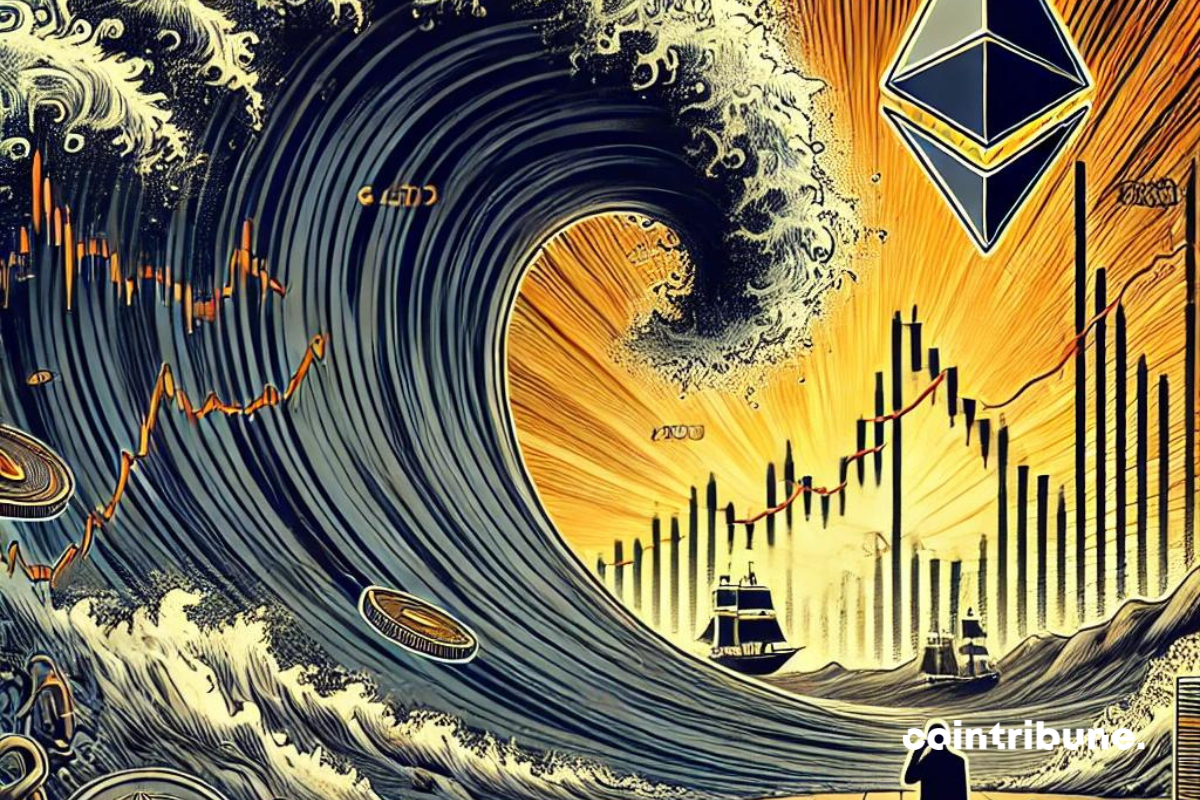Here is the misadventure of a crypto trader who has lost 43.7 million dollars since the beginning of the year by betting against Bitcoin.
Theme Trading
In a Brazil facing a significant annual monetary devaluation of 13%, protecting one's assets has become a major challenge for investors. As the local currency, the Brazilian real, gradually collapses, the search for effective solutions to preserve purchasing power intensifies. In this context, Bitcoin, often seen as a risky asset, proves to be a top alternative. With positive returns over the last decade, it outperforms gold and many traditional stock indices.
The Bitcoin blockchain, often seen as a key indicator of the vitality of the crypto market, is currently experiencing a period of minimal activity. The number of active addresses on the network has dropped to a historical low, with fewer than a million users. While this indicator reveals a significant decrease in investor interest, this situation could have profound consequences for the Bitcoin market, particularly regarding the crypto's ability to reignite a bullish cycle.
eToro, pinned by the SEC, sees its cryptos slip away! Hefty fine and reduced catalog on the agenda.
The Bitcoin market is going through a tumultuous period, marked by a series of significant sales from short-term holders. These investors, generally more sensitive to rapid market fluctuations, have decided to reduce their exposure in light of a decline in confidence regarding short-term price stability. This phenomenon occurs as macroeconomic uncertainties, particularly related to U.S. interest rates, continue to weigh on risky assets. However, this massive exit also paves the way for a new dynamic, with long-term holders seizing the opportunity to strengthen their positions.
The adoption of cryptocurrencies in France has never been stronger. New data confirms this. With 18% of French people now holding crypto assets, the country seems to be heading decisively towards a broader integration of these financial technologies. Far from being a niche phenomenon, this trend reflects a profound transformation of the economic landscape, driven by technological innovations and financial upheavals.
The world of crypto is about to experience a major event: the distribution of 16 billion dollars from the bankruptcy of the FTX platform. Scheduled for the end of 2024, this operation has been long awaited by the creditors of this platform. However, it comes at a time when crypto prices are stagnant. For investors, the stakes are high. This injection of liquidity, unlike other similar distributions in the past, could generate buying pressure and give a boost to cryptocurrencies like Bitcoin (BTC) and Solana (SOL).
The decline in trading volumes on centralized crypto platforms reflects an unexpected dynamic in the Bitcoin ecosystem. While the crypto sphere is usually shaken by strong volatility and intense speculative activity, a new report reveals a notable decrease in investor appetite for Bitcoin trading. This decline, which occurred despite some signs of market recovery, leads us to conduct a thorough analysis of the concrete data related to centralized exchanges.
Bitcoin, often referred to as digital gold, is going through a pivotal phase. After a significant drop in just a few days, the leading cryptocurrency seems to be regaining strength. However, this resurgence conceals deeper issues: American inflation, monetary policy, and the position of the dollar on the international stage. Far from being a mere market fluctuation, this rise of Bitcoin takes place in a context where economic and geopolitical pressures are redefining the contours of the global financial landscape.
The constantly evolving crypto market always holds surprises. As a result, meme coins are no exception. While giants like Dogecoin and Shiba Inu seemed untouchable, a new player emerged to shake up this balance in 2024: the WIF coin. Supported by the Solana network, known for its speed and low costs, this meme coin quickly climbed the ranks of the market, surpassing PEPE, one of the most popular.
In the span of a month, Bitcoin has lost 8.6% of its value. It reached its lowest point at the beginning of September. This decline occurs in a market context weakened by reduced liquidity and heightened selling pressure. Investors and traders, accustomed to the rollercoaster of prices, are searching for clues about the direction the market could take in the coming days. What are the immediate factors that led to this drop? What are the useful strategies for traders and the short-term outlook for the market?
A new dynamic is observed among the main holders of Bitcoin. In recent weeks, the number of wallets containing more than 100 BTC has reached its highest level in 17 months. This reflects a marked resurgence of interest from whales, those major investors in the sector. Over the span of 30 days, these key players have accumulated more than 133,000 BTC, amounting to a colossal sum of $7.6 billion. This record accumulation comes as small investors, alarmed by market fluctuations, are shedding their holdings, creating a striking contrast in investment behaviors.
The Bitcoin market is entering a critical phase, with institutions being the main players. Indeed, large financial institutions are currently absorbing almost all of the new BTC issued. This discreet yet massive strategy could soon disrupt market balances, even leading to a shortage of available Bitcoin.
The crypto market is often unpredictable. A new drop in XRP illustrates this clearly. Yesterday, XRP plunged to 0.5026. This situation led to massive liquidations in the futures markets, thus exposing the fragility of long positions in a context of widespread correction.
The Venezuelan opposition is exploring radical solutions to address the situation in the face of the country's economic collapse. Indeed, it proposes to use Bitcoin as a national reserve. The stabilization of this economy, devastated by years of mismanagement, depends on the recognition of Bitcoin as a store of value.
Financial markets, whether traditional or crypto-related, thrive on investor expectations. The Binance Coin (BNB) is currently attracting all the attention of traders. Far from being discouraged by the 7% drop in the cryptocurrency's value over a week, some investors are taking long positions, hoping to profit from a price recovery. However, the reality of the market is quite different. Liquidation risks are multiplying, with long positions accumulating.
Bitcoin has fallen below $56,000, with a loss of nearly 5% of its value in just a few days. However, professional traders are showing some resilience. Liquidations are moderate. Market indicators show unexpected stability, a notable contrast to previous phases of volatility.
Bitcoin, once a symbol of the inexorable rise of cryptocurrencies, is now faced with an unprecedented challenge. More than 10% below its all-time high, the leading global cryptocurrency is struggling to recover despite a halving event in 2024. This unexpected stagnation is raising multiple concerns among investors and industry experts.
Since Tuesday, XRP has experienced an unexpected surge in its trading volume. Within 24 hours, this cryptocurrency recorded a spectacular increase in both the derivatives market and the spot market. Despite the recent turbulence observed in the market, XRP seems to be benefiting from a significant resurgence of interest.
This Tuesday, Nvidia experienced a staggering drop in its market capitalization. The company lost nearly 270 billion dollars. This news, in addition to being an indicator of the current volatility of the market, redefines economic priorities in the era of technological innovation.
The calm before the storm. This is how one could describe the attitude of global markets at the beginning of this week. Stock markets around the world are oscillating, while the dollar seems firmly anchored. But for how much longer? As investors eagerly await crucial economic data from the United…
This week, Bitcoin exchange-traded funds (ETFs) in the United States recorded massive net outflows of $287.78 million. This is the largest capital loss since the beginning of May. This surprising movement occurs against a backdrop of increased volatility in both traditional and digital financial markets. What are the details of these fund outflows? What underlying factors could explain this phenomenon?
The blockchain network of The Open Network (TON), closely linked to Telegram, has just crossed the historic milestone of over one billion transactions. This achievement comes amid a backdrop troubled by recent disruptions caused by a memecoin airdrop. Indeed, the competition for the adoption of blockchain technologies is intensifying. The performance of TON is raising both interest and concern within the crypto community.
In a constantly evolving ecosystem where projects multiply and technologies compete, few dare to claim they have accomplished one of the greatest technical feats in history. Charles HOSKINSON, the founder of Cardano, made such a statement, placing his project at the pinnacle of global technological achievements. According to him, Cardano is not just another blockchain platform, but a technology comparable to an "unstoppable virus" that inexorably spreads and transforms the crypto industry. This bold assertion comes at a critical moment for Cardano, right after the implementation of the Chang hard fork, and resonates strongly in a crypto community often skeptical of grandiose promises.
Ethereum has just experienced its worst month in over two years. In August, ETH fell by 22%, wiping out any hope of a quick recovery. This drop comes at a time when many observers were expecting 2024 to be a positive year for the digital asset, particularly due to the anticipation of new regulations and the approval of an ETF. However, the reality is quite different. Factors such as massive fund outflows from Ethereum ETFs, scathing critiques from its co-creator Vitalik Buterin, and a decline in activity on the main network have plunged the market into a downward spiral.
Wall Street is optimistic! Good news on inflation and hope for rate cuts by the Fed in September.
Fluctuations are increasingly scrutinized in the crypto market. Bitcoin, the famous cryptocurrency, after a drop below the 58,000 dollar mark, must now prove its resilience to avoid a potentially dangerous trend break. Will Bitcoin be able to maintain its upward trajectory? Or are we on the brink of a more severe correction?
Financial transparency is becoming increasingly vital for tech companies. Telegram has been at the center of attention for the past few days with the release of its 2023 financial report, which reveals digital assets worth several million dollars. This announcement is surprising at a time when the messaging app, already under pressure for its ties to the crypto world, also has to deal with the fallout from the arrest of its CEO, Pavel DUROV. Why has Telegram decided to diversify its revenues in this way? What are the implications?
The crypto market is increasingly unstable. Despite a slight recovery that gave some confidence to investors, a shadow once again hangs over the future of digital assets. Indeed, Alan SANTANA, one of the most renowned analysts in the field of cryptography, predicts a spectacular collapse of 1 trillion dollars in market capitalization. So what are the factors likely to trigger such a fall?
The question of liquidity in the crypto market remains a major challenge. The recent introduction of exchange-traded funds (ETFs) for Bitcoin (BTC) and Ethereum (ETH) in the United States had raised hopes for improvement. However, according to the latest report from Kaiko, these expectations have only been partially met. Despite an increase in trading volumes on major platforms since November 2022, the reality is that the market remains fragile and vulnerable to sharp fluctuations. This report highlights two areas for reflection: the limited impact of ETFs on the true liquidity of the market, and structural issues.







